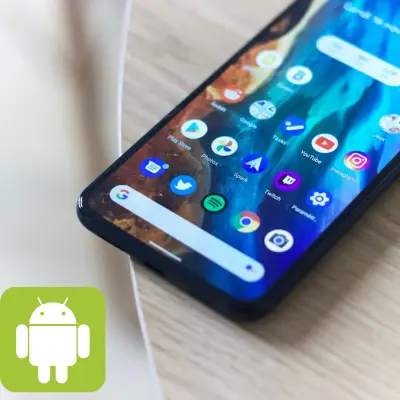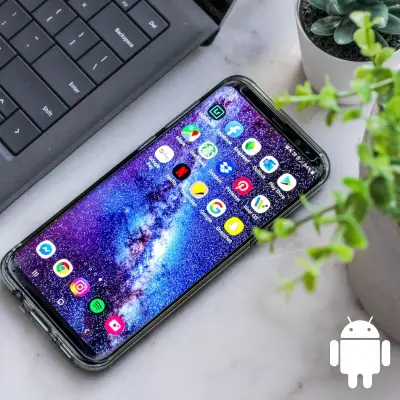Introduction To Android OS Image Editing
- Definition of Android Operating Systems:

Operating Systems (OS) are a family of open-source, Linux-based mobile operating systems. Google developed them. The designers of Android OS made it for smartphones, tablets, and other devices. It provides a versatile and customizable platform for a wide range of applications.
The evolution of Android OS has importantly influenced image editing software platforms. Android’s evolution has mirrored the growing demands and expectations of users. They engage in creative tasks on mobile devices. Early versions had basic photo editing capabilities. Now, advanced tools and seamless integrations are commonplace. This journey includes improved hardware support. It also has refined APIs and a flourishing ecosystem of image editing applications. These contribute to the platform’s prominence in the realm of mobile creativity.
- Android OS image editing software.
The Android OS was first released in 2008 as an operating system for digital cameras. It later shifted to focus on smartphones and other devices.

. The Android OS relies on the open-source Linux kernel. This allows developers to change and improve it according to their needs.
The Android OS has a version history. It follows a dessert-themed naming scheme, like Cupcake, Donut, and Eclair. Google released the latest version, Android 12, in October 2021. It includes Froyo, Gingerbread, and more.
Image editing software for Android refers to applications. They allow users to manipulate and enhance photos on their devices. These apps offer features like cropping, resizing, and rotating. They also include filtering, adjusting colors, removing blemishes, and adding stickers.
Image editing software for Android has evolved over the years. Android OS has improved its hardware support, APIs, and user interface. The increasing popularity of social media has influenced this evolution. The demand for high-quality photos is also a factor. The availability of diverse and innovative apps is another factor.
In 2022, Snapseed, YouCam Perfect, PicsArt, PhotoDirector, and Adobe Photoshop Express are among the best image editing apps for Android. These apps offer a variety of tools and features. They suit users’ different needs and preferences.
Android OS Architecture.
- Overview of Android Architecture:
The Linux Kernel Foundation is the core of the Android operating system. It provides essential functionalities such as threading and low-level memory management. It also provides security and device drivers. The open-source Linux kernel serves as the foundation, enabling flexibility and customisation.

Libraries and runtimes are the key components that support application development on Android. They include native C/C++ libraries. For example, OpenGL ES, Media, and Surface Manager provide access to hardware features. They also enable graphics rendering. They also include the core runtime libraries. The libraries put in place most of the Java programming language features. They also include some Java 8 language features.
Android Runtime (ART/Dalvik) executes applications and manages memory on Android devices. For devices running Android 5.0 (API level 21) or higher, each app runs in its own process. Each app has its own Android Runtime (ART) instance. ART uses ahead-of-time (AOT) and just-in-time (JIT) compilation. It converts Dalvik Executable (DEX) files. DEX is a bytecode format optimized for Android. ART converts DEX files into more compact machine code. Devices running lower versions of Android use the Dalvik virtual machine (DVM) instead. It is a register-based virtual machine designed for low-memory devices.
Application Framework: This is the component that enables high-level application development on Android. It provides a set of Java framework APIs. They expose the functionality of native libraries and the Android runtime to apps. It also provides various services. For example, activity manager, notification manager, and view system. There is also the package manager and more. These help manage the user interface, application resources, and application lifecycle.
System Applications are essential pre-installed applications. They run on Android devices. Examples include home, contacts, camera, and gallery. Third-party app developers build them using the same APIs and tools available.
- Key Components Influencing Image Editing Capabilities:
The Graphics Processing Unit (GPU) accelerates image rendering and processing on Android devices. It is a specialized hardware unit. It performs complex calculations for graphics operations. For example, drawing, scaling, filtering, and transforming images. It works with native libraries like OpenGL ES and Surface Manager. This provides fast, smooth graphics performance.
Camera APIs provide access to device cameras for image capture on Android devices. They allow apps to control various aspects of the camera. These include focus, exposure, zoom, flash, and resolution. They also support different camera modes, such as burst, panorama, and HDR
The Media Framework is the component that handles audio and visual elements. It is crucial for image editing on Android devices. It includes a set of native libraries, like Media, Media Codec, Media Extractor, and Media Mixer. They support playing and recording various audio and video formats. Examples include JPEG, PNG, GIF, MP4, and WebM. It also includes a set of Java framework APIs. For example, Media Player, Media Recorder, and MediaMetadataRetriever. These APIs expose the functionality of the native libraries to apps.
The Storage Access Framework is a component. It facilitates seamless access to device storage for image files on Android devices. It provides a standard way for apps to browse and open documents, images, and other files. It works across all of the user’s preferred storage providers. These include internal storage, external storage, cloud storage, and media cards. It also provides a consistent user interface for selecting files and granting permissions.
Connectivity Modules support network features for cloud-based image editing on Android devices. They are components. They include various native libraries and Java framework APIs. These provide access to different types of network protocols. They include HTTP, HTTPS, FTP, Bluetooth, Wi-Fi, and NFC. They also include various services and features. These enable data synchronization, push notifications, location services, and authentication.
Understanding these components is vital. They help us comprehend how Android’s architecture supports image editing on the platform.
Image Editing Software on Android
- Popular Image Editing Applications:
Adobe Photoshop Express is a mobile adaptation of the famous desktop software. It offers a variety of features.

Snapseed: Developed by Google, this app provides robust editing tools and filters.
Lightroom Mobile: Adobe’s professional-grade photo editing app for mobile devices.
PicsArt is a comprehensive app for editing both photos and videos. It’s equipped with creative tools.
VSCO: Focuses on simplicity and includes a community platform for sharing edits.
- Integration with Android OS Features for Seamless User Experience:
The app employs Android’s camera APIs. It captures images directly within the app.
Storage Access: Uses Android’s Storage Access Framework for effective file management.
Notification System: Sends notifications for completed tasks and updates during the editing process.
Sharing and Intent System uses Android’s intent system. It makes sharing edited images between apps straightforward.
Multitasking Support: We designed it for multitasking. This enables users to smoothly switch between editing and other applications.
These applications show the benefits of integrating with Android OS’s core features. This improves user experience. It makes image editing more convenient and efficient on mobile devices.
Android OS versions and compatibility
Version Evolution
This book traces the Android version history. It starts with early ones like Cupcake and Donut. It also covers the latest, such as Android 12.

We highlight the key features introduced in each version of the software. These features are relevant to image editing.
The discussion focuses on how changes to Application Programming Interfaces (APIs) affect the development of image editing apps.
Compatibility Challenges and Solutions
This page addresses the challenges of device diversity and different OS versions.
This section discusses tailoring image editing apps for performance. It covers various devices and Android versions.
Security updates are important for compatibility with the latest security patches. It’s also important to maintain backward compatibility.
We explore strategies for integrating new OS features without affecting older versions.
We mention robust testing procedures to identify and resolve compatibility issues during development.
To ensure a consistent user experience in image editing software, it’s essential to navigate the nuances of Android OS and address compatibility challenges.
Hardware Considerations
Processor (CPU): The CPU is vital for the speed and efficiency of image processing tasks.
The Graphics Processing Unit (GPU) is key for rendering graphics. It also improves image editing capabilities.
Adequate RAM is necessary to handle large image files. It is also necessary for multitasking during editing.
Display Resolution: High display resolution ensures better visual clarity and precision.
We need enough storage capacity for saving images and editing data.
Optimization Strategies
Dynamic Resource Allocation: Adjusts resource usage to match device capabilities for optimal performance.
Resolution Scaling: Modifies image processing algorithms based on display resolution to maintain quality.
Multi-Core Use: Enhances code to use many CPU cores for faster processing.
Memory Management: Efficient RAM use and caching strategies improve app responsiveness.
Device-Specific Profiles tailor settings and features to different device capabilities. The profiles balance performance and efficiency.
Security and Privacy Concerns
- Android OS Security Features:
Permission System: Controls app access to sensitive features.

Secure Boot Process: Verifies device boot integrity to prevent unauthorized changes.
File-Based Encryption: Encrypts files to protect user data.
Google Play Protect: Offers malware protection and app scanning.
Biometric Authentication: Uses biometrics for secure user authentication.
- Safeguarding User Data
Data Encryption: Secures user-generated and edited image data with encryption.
Secure Data Transmission: Ensures safe image transfer using secure protocols.
Privacy Settings: Provides user control over image and data visibility.
Data Deletion Policies: Allows secure data deletion on user request or app uninstallation.
Regular Security Audits: Identifies and fixes potential vulnerabilities through periodic audits.
Maintaining strong security is crucial for user trust in Android image editing software. It needs to happen at both the OS and app levels.
Market Trends and Innovations
- Emerging Trends in Android-Based Image Editing Software:
AI-Powered Editing is a trend. It involves using artificial intelligence to automatically enhance the quality and aesthetics of photos. It also provides creative suggestions for filters, effects, and styles. Some photo editing apps use AI-powered editing. Examples are Adobe Photoshop Express, Google Snapseed, and VSCO.
Augmented Reality (AR) Features: This trend involves adding AR elements to photos. Examples include stickers, animations, masks, and virtual backgrounds. Users can create fun and engaging photos using these features and share them on social media. Some photo editing apps use AR features. For example, PicsArt, YouCam Perfect, and FaceApp.
Social Media Integration enables users to easily share their edited photos directly to popular social platforms. These platforms include Facebook, Instagram, Twitter, and WhatsApp. This feature increases the exposure and reach of the photos. It also boosts user engagement and feedback. [CyberLink PhotoDirector], [LightX], and [Pixlr] are photo editing apps. They use social media integration.
Subscription models are a trend. They involve offering subscription-based models for users to access premium editing features. These include advanced tools, filters, effects, and cloud storage. This feature generates revenue for the app developers. It also provides value and convenience for the users. Some photo editing apps, like [Adobe Lightroom], [Polarr], and [InShot], use subscription models.
Real-time collaboration is a trend. It involves enabling users to collaborate on editing projects in real time. For example, they can co-edit, comment, and share. This feature fosters teamwork and creativity among users. It also enhances the quality and diversity of the photos. Some photo editing apps use real-time collaboration. Examples include Fotor, Canva, and PicCollage.
- Technological Innovations Shaping the Future of Android OS for Image Editing:
5G Connectivity: This innovation involves using 5G networks to provide high-speed connectivity. It enables cloud-based editing and collaborative workflows. This innovation improves the performance and efficiency of the photo editing apps. It also reduces the latency and bandwidth issues. [Adobe Photoshop Camera], [Prisma], and [Enlight Pixaloop] are photo editing apps. They use 5G connectivity.
This innovation involves optimizing image editing interfaces for foldable and dual-screen Android devices. These include the Samsung Galaxy Fold and Microsoft Surface Duo. This innovation enhances the user experience and productivity of photo editing apps. It also expands the screen size and resolution of the photos. Snapseed, Photo Editor Pro, and Photo Lab are some photo editing apps. Designers have created them for foldable devices.
Edge Computing involves using edge computing for faster image editing on the device. Instead of being done on the cloud, someone performs this task. This innovation increases the security and privacy of the photo editing apps. It also reduces the dependency and cost of the cloud services. Some photo editing apps that use edge computing are Darkroom, Afterlight, and TouchRetouch.
Extended Reality (XR) involves integrating extended reality technologies. These technologies include virtual reality (VR) and mixed reality (MR). They create more immersive editing experiences. This innovation creates new possibilities and challenges for photo editing apps. It includes 360-degree editing, 3D modeling, and holographic projection. Some photo editing apps use XR technologies. They include Google Cardboard Camera, Adobe Aero, and SketchAR.
Enhanced Machine Learning involves advancements in machine learning algorithms. This makes editing tools more intelligent and context-aware. This innovation improves the accuracy and quality of photo editing apps. It also provides personalized and adaptive features for the users. Adobe Photoshop Elements, Luminar AI, and FaceTune are some photo editing apps. They use enhanced machine learning.
Case Studies
- Successful Implementations of Android OS for Image Editing:
Snapseed by Google features an intuitive user interface and powerful tools. This optimizes for Android devices.
Adobe Lightroom Mobile: Offers professional-grade capabilities with seamless Android integration.
PicsArt: Popular for its creative features and vibrant community engagement.
VSCO: Known for its simplicity and minimalist interface, yet provides high-quality editing features.
Prisma stands out with artistic filters and real-time style transfer. It enhances the editing experience.
- Lessons Learned and Best Practices:
Device Compatibility Testing: Ensures consistent performance across various Android devices.
User Feedback Integration: Enhances app functionality and usability by valuing user input.
Optimization for Varied Screen Sizes focuses on responsive design for different Android screen sizes.
Balancing Features and Performance: Aims to offer innovative features without compromising performance.
Security is a priority. It maintains user data security and privacy in line with Android OS guidelines.
These case studies highlight the importance of best practices. They show the need for robust image editing apps for Android.
Challenges and Future Outlook
- Current Challenges in the Android Image Editing Landscape:
Android OS has a large and diverse user base. It includes different devices and OS versions. This poses a challenge for image editing app developers. They must ensure consistent user experiences across various devices and OS versions. Developers need to test their apps on many devices and OS versions. They also need to adapt their apps to different screen sizes. They need to consider resolutions and hardware specifications also.
Image editing apps need high computational power and memory. They use it to process and manipulate images. This is because of resource limitations. But, not all Android devices have the same hardware capabilities. Some may have limited resources, such as CPU, RAM, storage, and battery. Developers need to optimize their apps for devices with varying resources. They should also avoid performance issues like lag, crashes, or battery drain.
Security Concerns: Image editing apps often handle sensitive user data. This includes personal photos, location, and account information. Developers need to mitigate potential risks associated with user data and app vulnerabilities. These risks include data breaches, malware, and unauthorized access. Developers must follow Android OS security guidelines. They should install encryption, authentication, and permission mechanisms. These protect user data and app functionality.
Image editing apps offer advanced features and capabilities. These can enhance the user’s image editing experience. But, not all users may be aware of these features and capabilities, or how to use them effectively. Developers need to ensure that users understand the app’s features and capabilities. They should educate users about the app. They should provide intuitive and user-friendly interfaces, tutorials, and guides. These will help users learn and use the app.
Image editing apps face a competitive landscape. Many existing and emerging apps vie for user attention and preference. Developers need to navigate this competition. They must offer innovative and distinctive features and capabilities. They can attract and keep users. Developers also need to keep up with the evolving user expectations and preferences. They must update their apps accordingly.
- Predictions for the Future:
Artificial intelligence (AI) experts expect image editing apps to play a larger role. It can offer intelligent image analysis and editing suggestions. AI can help users enhance their images. It can adjust the exposure, contrast, color, or sharpness. It can also apply filters, effects, or stickers. AI can also help users create new images. It can generate realistic faces, backgrounds, or scenes. It can also transform images into different styles or genres.
We expect that image editing apps will increasingly adopt cloud-based editing. Cloud services can offer collaborative and resource-intensive editing tasks. Cloud services can help users edit their images online. They don’t have to download or install any software or use any device resources. Cloud services can also help users share their images with others. They can collaborate on editing projects in real time.
We expect augmented reality (AR) and virtual reality (VR) to become more integrated with image editing apps. They can offer immersive editing experiences. AR and VR can help users edit their images in a 3D environment. They can also interact with their images in a more realistic and engaging way. AR and VR can also help users create new images. They can do this by adding 3D objects, animations, or effects. They can also make 360-degree panoramas or videos.
We expect image editing apps to improve in cross-platform compatibility. They can offer seamless editing experiences across Android devices and other platforms. Cross-platform compatibility can help users edit their images on any device. They can use smartphones, tablets, laptops, or desktops. They can sync their edits across devices. Cross-platform compatibility can also help users access their images on any platform. This includes web, iOS, Windows, and Mac. It can also help them export their images to different formats or platforms.
We expect image editing apps to enhance privacy controls. They can offer more robust protection of user data. Privacy controls can help users to control their data. They can choose what data to share, with whom, and for how long. They can also delete or encrypt their data. Privacy controls can also help users to prevent unwanted access. For example, users can lock their apps, hide their images, or block third-party trackers or ads.
These predictions show the potential directions and opportunities for Android OS. This includes the field of image editing software development.
Conclusion.
- Recap of Key Points:
We explored the evolution and architecture of Android OS.
We examined popular image editing applications on the platform.
We analyzed the impact of Android OS versions and compatibility challenges.
We considered the influence of device specifications on image editing performance.
We explored security measures and privacy considerations in image editing apps.
We discussed emerging market trends, innovations, and successful case studies.
We explored challenges and provided insights into the future outlook.
- Final Thoughts on the Role of Android OS in Advancing Image Editing Capabilities:
Android OS has evolved as a robust platform for image editing. It drives mobile creativity.
Its open ecosystem, diverse devices, and technological advancements foster innovation.
The Android OS is ready to push the boundaries of image editing capabilities.
The synergy between Android OS and image editing software hints at a dynamic future. It holds exciting prospects for developers and users.
